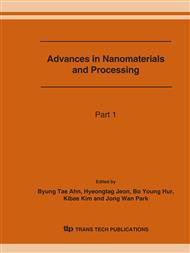[1]
B.P. Miglin, J.M. Sarver, Preliminary studies of lead stress corrosion cracking of Alloy 690", Proc. of the 4th Int, l Symposium on Environmental Degradation of Materials in Nuclear Power Systems-Water Reactors-, pp.7-18, Jekyll Island, Georgia, USA, Aug. 6-10, (1989).
DOI: 10.1002/9781118787618.ch73
Google Scholar
[2]
S.S. Hwang, H.P. Kim, D.H. Lee, U.C. Kim, J.S. Kim, Corrosion behavior of Ni-base alloys in lead contaminated water, Proc. of the Contributions of materials investigation to the resolution of problems encountered in pressurized water reactors, Vol. 1, pp.403-415, Fontevraud IV, France, Sept. 14-18, (1998).
Google Scholar
[3]
S. S Hwang, U.C. Kim, Journal of nuclear materials, 246 (1997) : p.77.
Google Scholar
[4]
S. S Hwang, H.P. Kim, D.H. Lee, U.C. Kim, J.S. Kim, Journal of nuclear materials, 275 (1999) : p.28.
Google Scholar
[5]
T. Sakai, T. Senjuh, K. Aoki, T. Shigemitsu, Y. Kishi, Lead induced stress corrosion cracking of Alloy 600 and 690 in high temperature water", Proc. of the 5th Int, l Symposium on Environmental Degradation of Materials in Nuclear Power System-Water Reactors, pp.764-772, Monterey, California, USA, Aug. 25-29, (1991).
DOI: 10.1002/9781118787618.ch73
Google Scholar
[6]
S.S. Hwang, J.S. Kim, U.C. Kim, et al., Failure analysis report of the steam generator tubings pulled out from Kori unit 2, Korea Atomic Energy Research Institute, (1990).
Google Scholar
[7]
T. Sakai, N. Nakagomi, T. Kiuchi, K. Aoki, F. Nakayasu, K. Yamakawa, Corrosion, 54 (1998) 515.
Google Scholar
[8]
Koo�Kab�Jung, Proceedings; 7th Int'l�Symposium on Environmental Degradation of Materials in Nuclear Power Systems-Water Reactors - Aug. 7-10, Breckenridge, Colorado, p.233, 1995, (NACE, Houston, 1995).
Google Scholar
[9]
D. Costa, T. Tahala and P. Marcus, M Le Calvar and A. Gelpi, Proceedings; 7th Int'l Symposium on Environmental Degradation of Materials in Nuclear Power Systems-Water Reactors - Breckenridge, Colorado, USA, Aug. 7-10, 1995) p.199.
Google Scholar
[10]
S.S. Hwang, J. S Kim, Corrosion, 58 (2002) 392.
Google Scholar
[11]
R. Kilian, Influence of lead on the SCC behavior of SG tubing materials, IAEA specialists meeting on steam generator problems and replacement, International Atomic Agency, Madrid, 1993, p.137.
Google Scholar
[12]
Marcel Pourbaix, Atlas of electrochemical Equilibria in Aqueous Solutions, Texas, USA, NACE, 1974), p.264 and p.333.
Google Scholar
[13]
D. Feron, I. Lambert, Lead species and lead migration in PWR secondary circuit conditions", Proc. of the 12th Int, l conference on properties of water and steam, Orlando, FL, USA, Sept. 12-15, (1994).
Google Scholar


